Pilgrims
About
Storm Tharp’s ink portraits are like altered vanitas, drawn out through time, in which the proud busts recall the classical portrait tradition, while bearing decomposed, recomposed, stained, and deformed faces, as if to inform us that presence and dignity do not emanate so much from a restored façade as from the extreme sensibility that Tharp portrays in these faces. For Tharp, the portrait is not a state of the present, but must show the entire life of the individual, make visible all the moods and self‑digressions that make up the whole.
Emotional, the gazes of unexpected gentleness spring from the distorted faces and surprise with their calm strength whoever dares to meet them. And a kind of empathy then settles in, opening the way to introspective communication, an experience of otherness in which universal suffering of being resonates, though its form is nonetheless unique to every story.
These portraits seem both foreign and familiar. The fractured plurality of multiple selves is constructed into one cohesive portrait adorned in pictorial t‑shirts and dress shirts in soft colors that hark back to some of Tharp’s earlier work. The technique employed for the faces is more “brutal”, and Tharp reflects influences from African art, cubism, and abstraction that are very important in his figurative practice. In this series in ink and gouache, we also note fine, sometimes barely visible cut‑outs and collages and an occasional use of spray paint.
Tharp is not playing at being provocative, but is rather of that vein of artists for whom affect is an essential element. In their journey of initiation, the quest of his pilgrims is without a doubt spiritual: an existential struggle in search of the self, in a world in which one must endlessly make and put on new faces and other masks, occupy the media terrain, and multiply online identities, without losing the roots of one’s own entity.
His portraits seem to make up a family collection, in which a radical glitch at some point exteriorized the disturbing or fascinating interiority of the members represented, their psyche. With Tharp, the wanderings, wounds, or rough edges of the soul are no longer monstrosities to be erased but on the contrary vivid finery, providing these gazes the honesty from which they draw their strength.
Storm Tharp, Womanly Hands, 2015
Storm Tharp, A Friend of a Friend, 2015


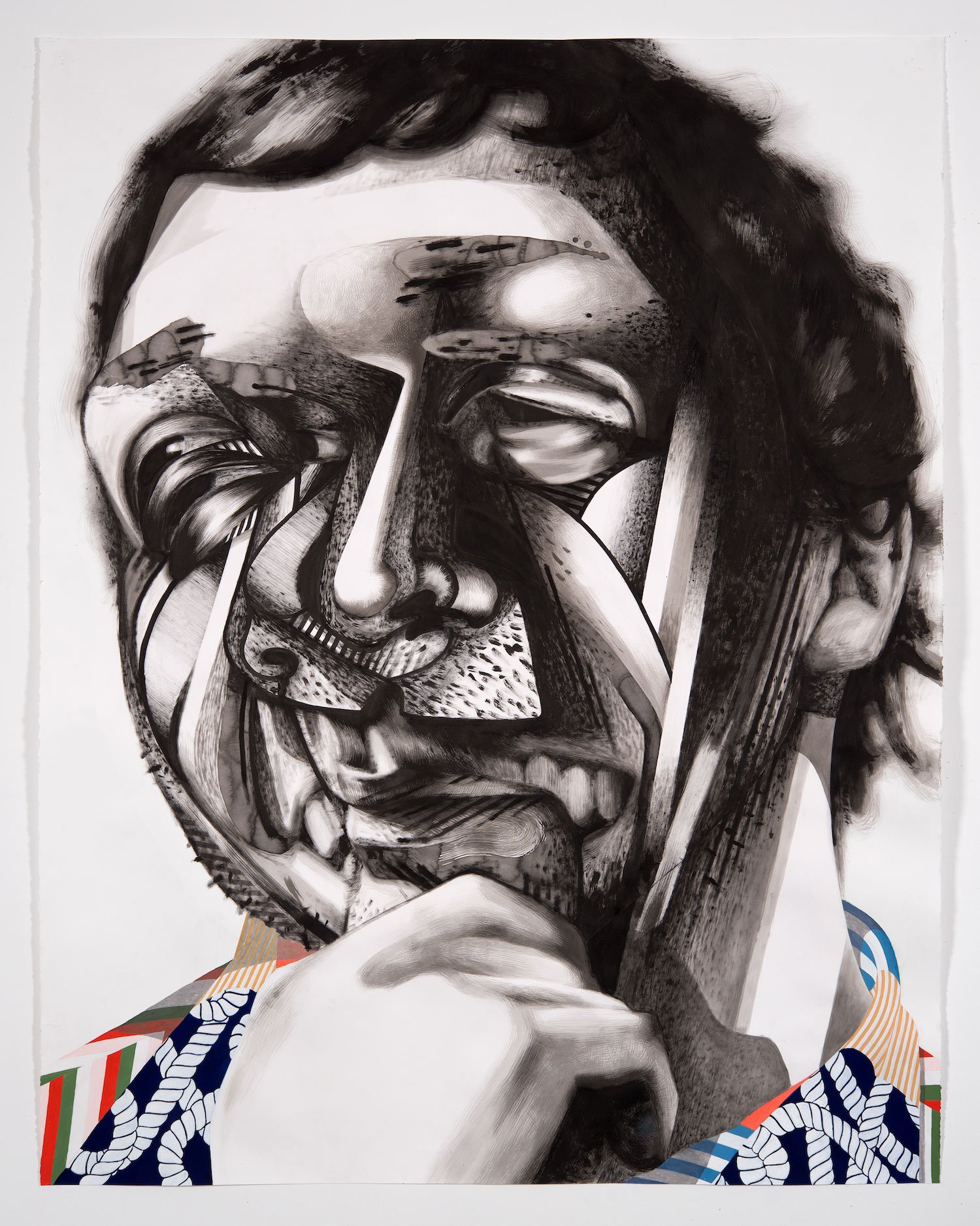


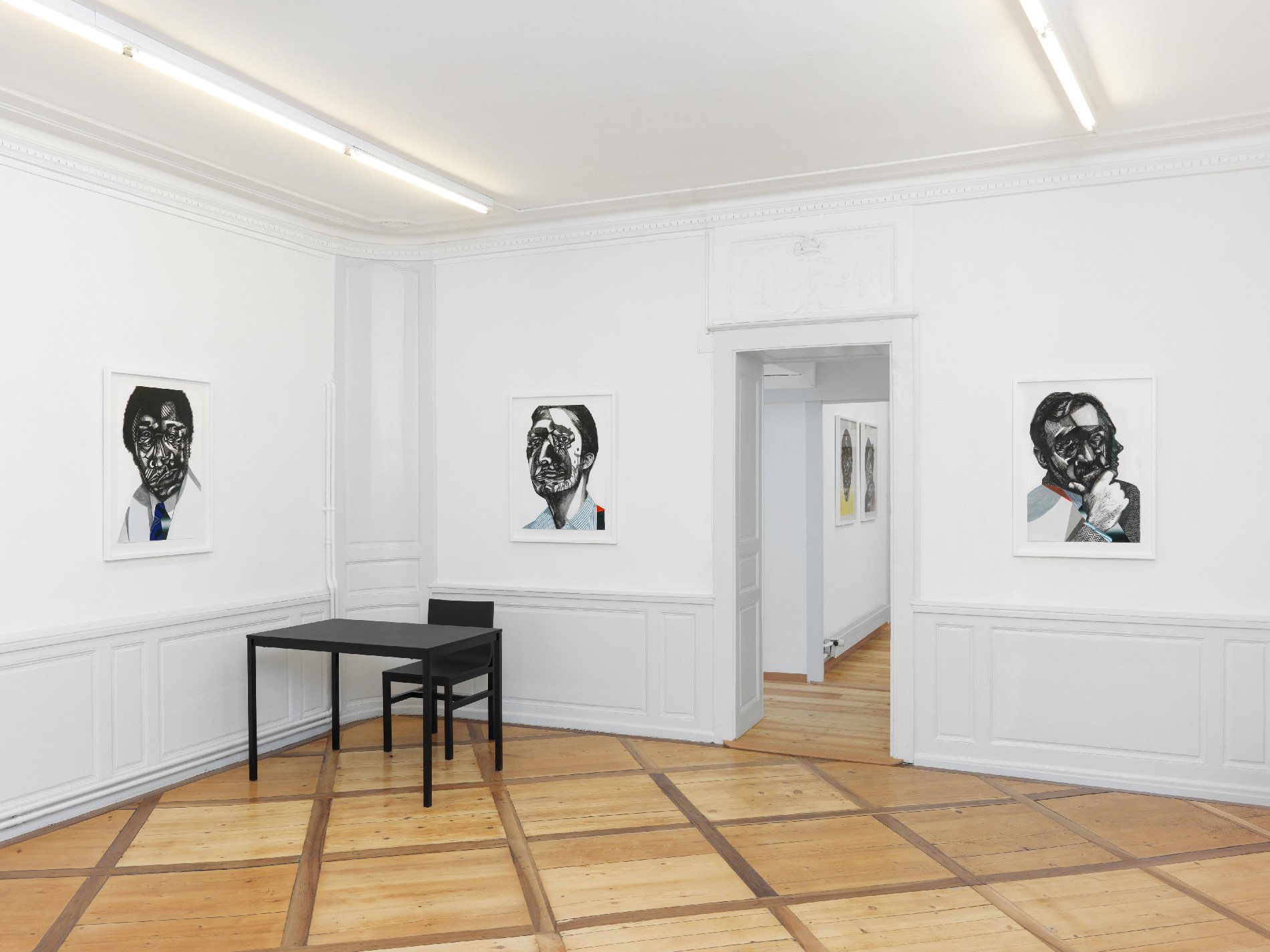

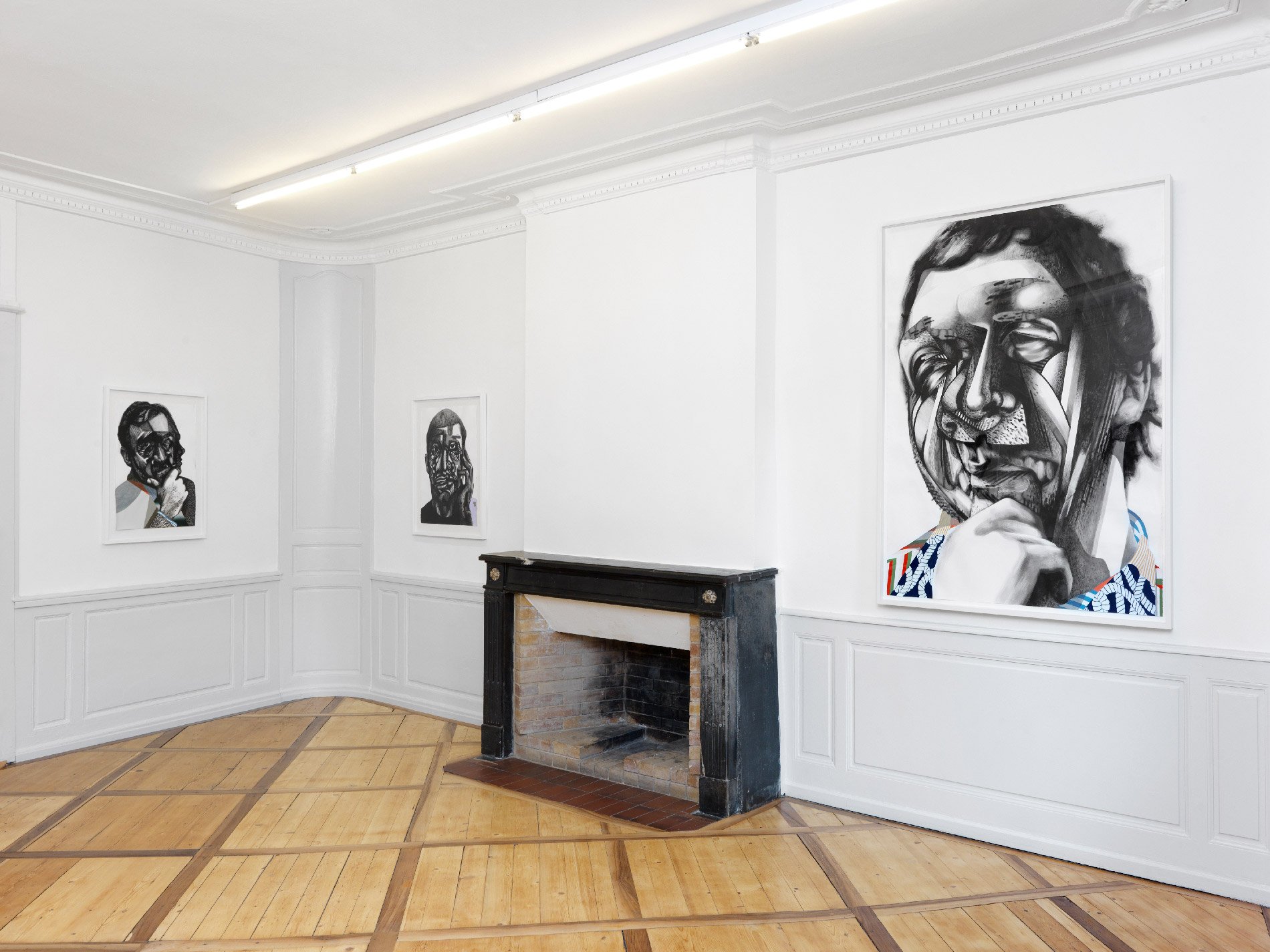


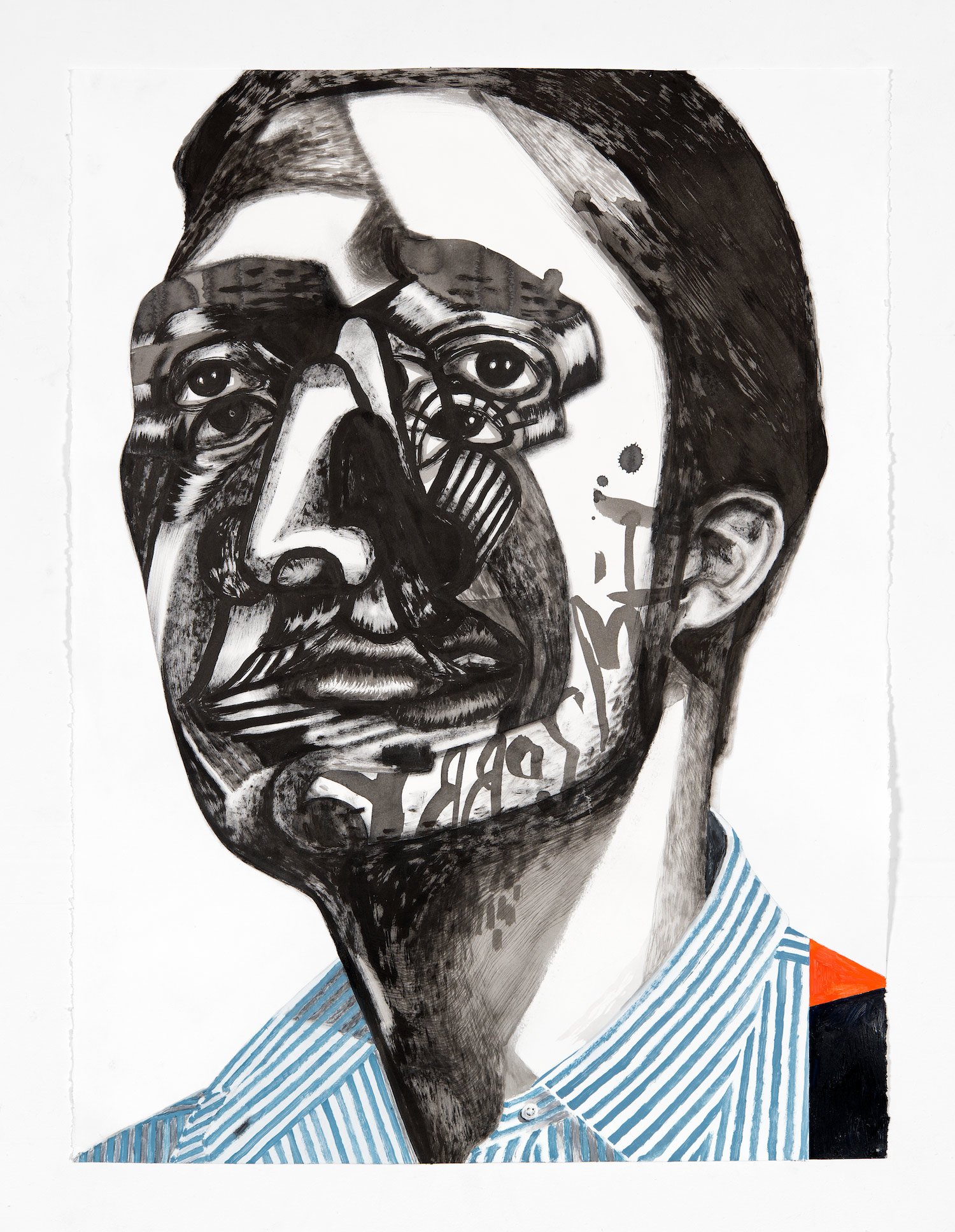
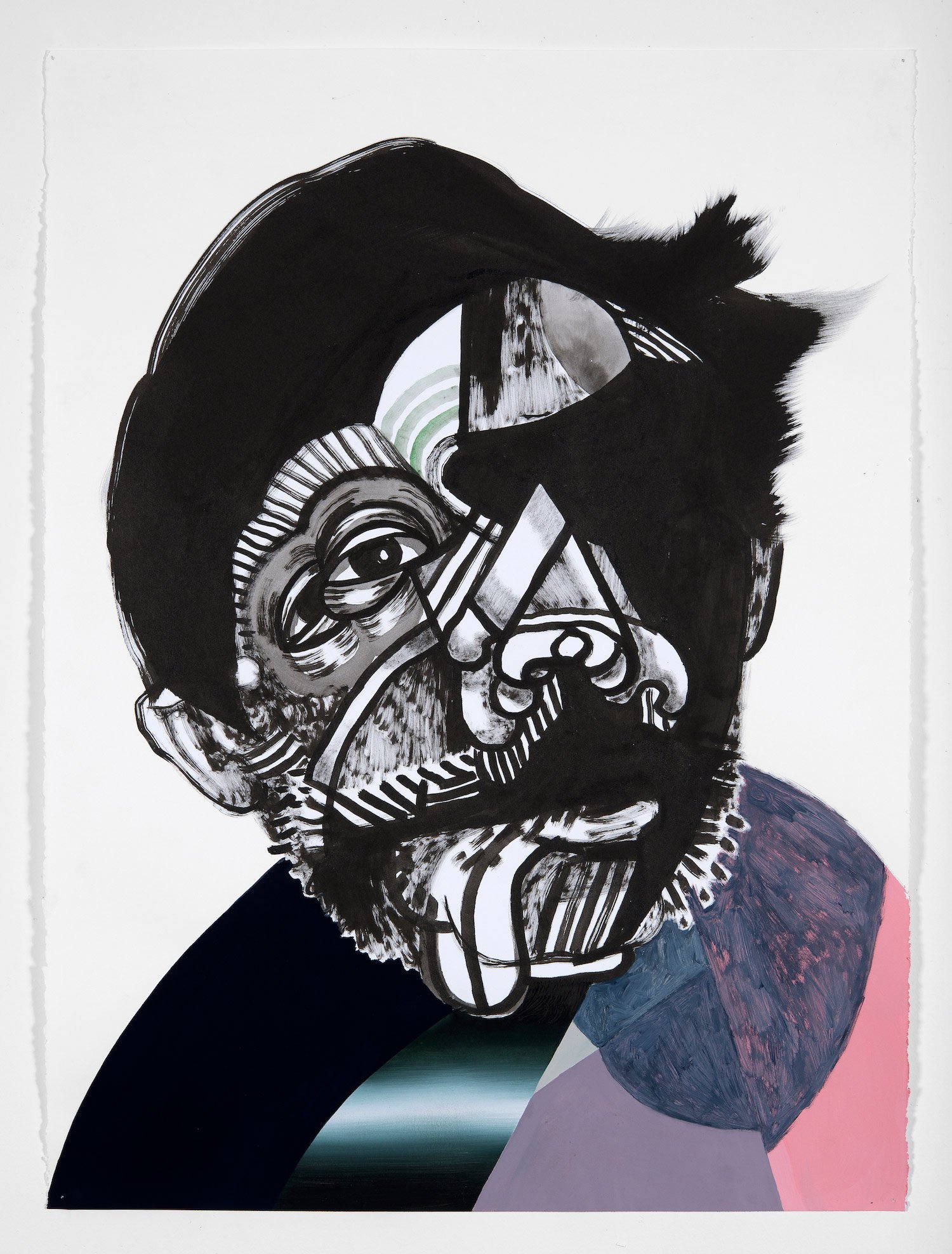
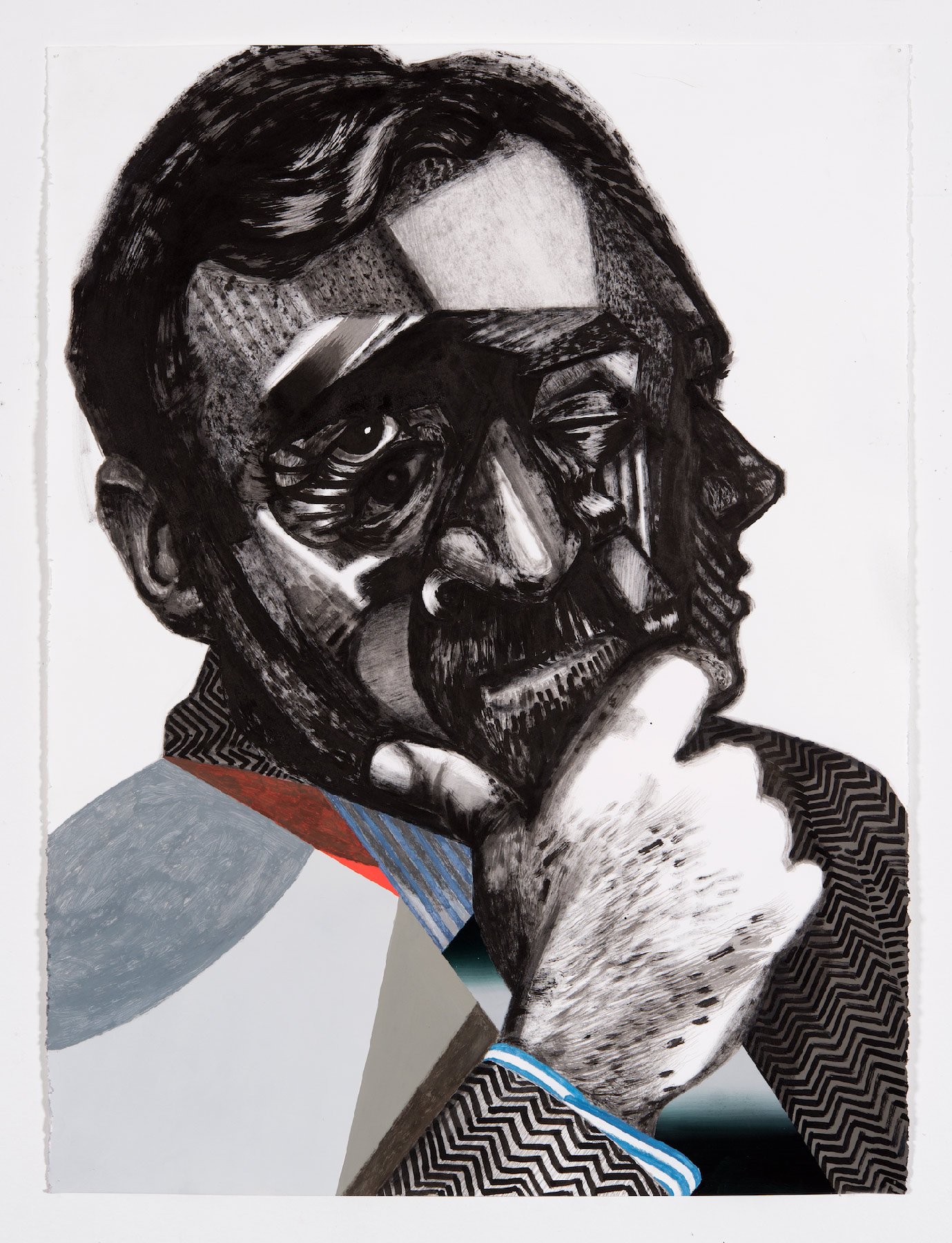
2015
gouache, glue and linen tape on paper
164 x 127 cm / 64.5 x 50 in.